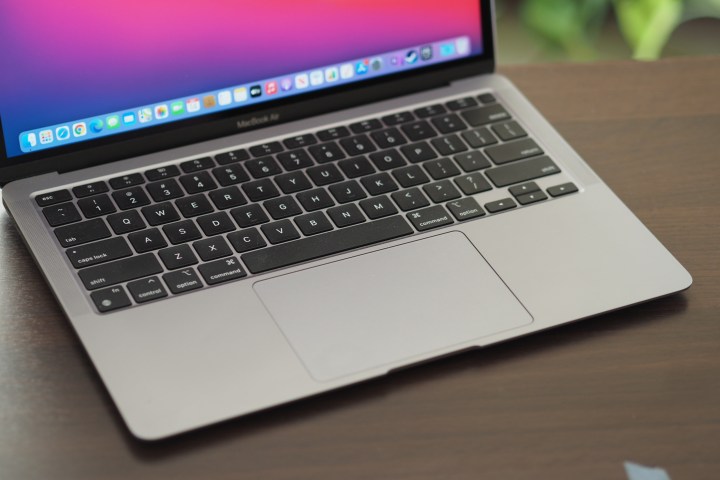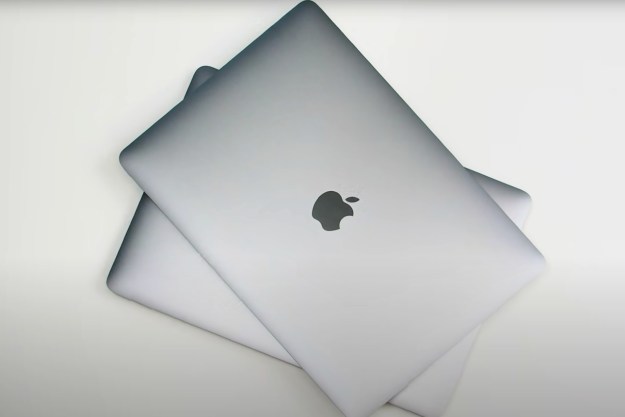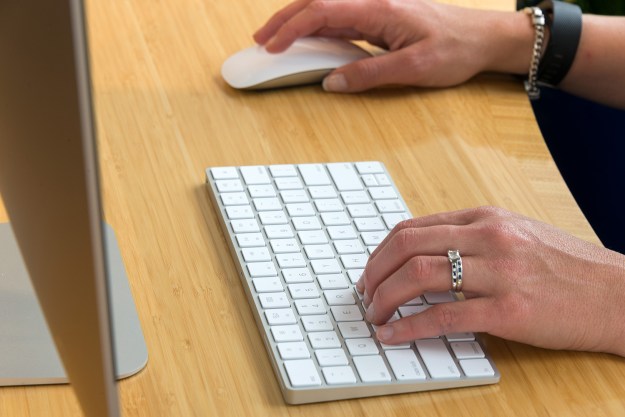Picking the right Mac isn’t an easy task. Do you want a laptop or a desktop? Something lightweight with a long battery life or a powerhouse with the most capable components? While the answer to either of those questions is dependent on your situation, there are some universal truths about all hardware that are worth taking note of to make your choice easier.
In this comparison, we pit Apple’s fantastic Mac Mini against the MacBook Air. Both have Apple’s new M1 chip, but which is more worth your time and money? Let’s see which comes out on top.
Design

The Mac Mini and MacBook Air build upon the design choices of their predecessors. Both devices are exceptionally well-built, with sturdy frames that don’t creak or bend.
The Mac Mini is a thin slab with a metallic casing that’s incredibly understated in its design. It can be an attractive centerpiece in your office or remain hidden beneath a monitor or under the desk. You can essentially put it wherever your monitor cables can reach, but it’s still a desktop, meaning it’s designed to remain stationary.
The MacBook Air is a different beast entirely. It’s a laptop, after all. It’s longer and broader than the Mac Mini due to the integrated screen, but it’s also much thinner. Since it’s a laptop, you can use it anywhere, unlike the Mac Mini.
For connectivity, the Mac Mini packs its smaller footprint with a decent array of ports — though not as wide as prior models. The M1 Mac Mini has an Ethernet port, a Thunderbolt/USB 4 port, an HDMI 2.0 port, two USB-A ports, and a 3.5mm headphone hack.
The MacBook Air is far more restrictive, with only two Thunderbolt 4 ports and a 3.5mm headphone jack. You don’t necessarily need a huge selection of video outputs with a laptop, but the Mac Mini is far more versatile when it comes to wired connections.
Both devices support Wi-Fi 6 (802.11.ax) wireless networking and Bluetooth 5.0.
Performance
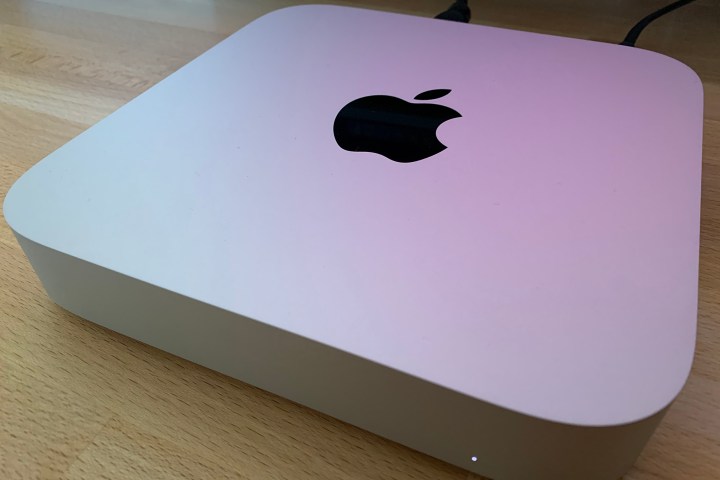
The hardware options for the MacBook Air are limited. Since the only option is the M1 chip for the processor, you’re left with upping the memory to 16GB and the storage up to 2TB.
The base configuration starts at $899 and comes with the M1 processor, 8GB of unified memory, and 256GB of solid-state drive storage. The M1 makes the MacBook Air a powerhouse in performance, blowing away essentially every computer in its class. That’s a huge upgrade from prior Air models. Plus, the Air is fanless, so it packs all this power and performance into a silent design. It doesn’t quite compete with the MacBook Pro, but it is impressive nonetheless.
If you want a little more headroom on the memory and storage front, you can upgrade to 16GB of unified memory($180) and up to 2TB of storage ($720 max). Other customization options up the GPU cores from 7 to 8 (what’s available in the MacBook Pro).
The M1 offers incredible performance, and it finally makes the Mac viable for gaming. Both devices can handle games quite well (well, for Macs at least).
The Mac Mini has a much lower starting price of $699, but its hardware configuration is slightly weaker in turn. It sports an M1 processor with an 8-core GPU, 8GB unified memory, and 256GB of storage. It also has a Gigabit Ethernet port.
With essentially the same chip as the MacBook Air, the Mac Mini actually delivers even more performance. This is thanks to its built-in fan and dedicated power supply. That lets the Mac Mini work on complex tasks for longer without losing performance. If you’re looking to get the most out of your Mac purchase, the Mini definitely edges the Air out.
However, storage upgrades reach 2TB and are just as expensive as the MacBook Air’s options. The unified memory is also still capped at 16GB.
Thanks to Apple’s M1 chip and new security features, neither are exactly friendly to do-it-yourself (DIY) fixers. You’ll want to get Apple Care with either one.
The Mac Mini is more capable at a similar price as the MacBook Air, but it’s important to note that where the Apple laptop can be used right out of the box, the Mac Mini lacks all the peripherals required to use it correctly, like a keyboard, mouse, and speakers or headphones. It doesn’t have its own display, either (here are some great recommendations) — depending on your preferences, that could be a major expense to add on top of the purchase. Even after all those peripheral expenses, though, the Mac Mini is still one of best cost to performance PCs you can get.
In comparison, the MacBook Air has a keyboard and touchpad built into the frame. Apple ditched the butterfly switch keys last year in favor of the old Magic Keyboard layout, and Apple fans rejoiced at the decision.
The display is a classic Apple Retina design and now features True Tone technology, with a high resolution of 2,560 x 1,600 pixels. It still looks good, but it doesn’t stand out in the way it used to a few years ago as competitors catch up in quality.
Portability
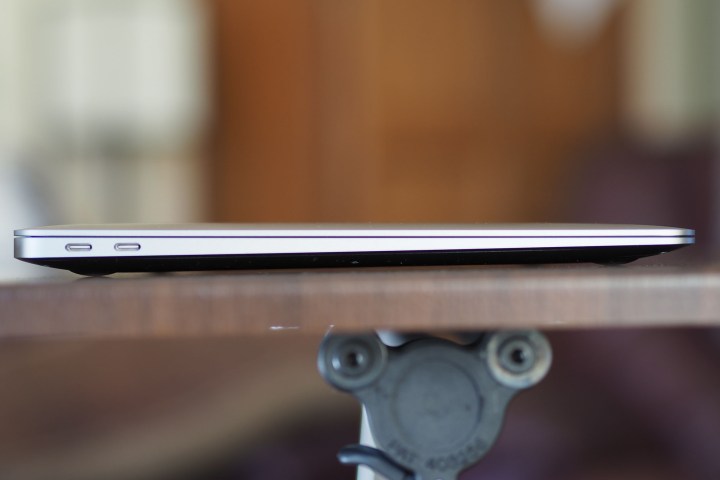
There’s no denying that the MacBook Air is the more portable of the two. At just 2.8 pounds and 11.97 by 8.36 by 0.61 inches, it’s a lean and lightweight laptop that can be used on the go. It has the best battery life of any MacBook we’ve tested, which isn’t fantastic by modern laptop standards, but it’s enough to keep you going through a full workday and well into the evening.
The Mac Mini isn’t designed to be used on the go, so there’s no built-in display, keyboard, or battery. However, it is very compact, measuring 7.7 by 7.7 by 1.4 inches. It’s also very light, weighing just 2.6 pounds, which is only slightly heavier than the MacBook Air.
We aren’t saying you’ll want to take it on the train with a display, keyboard, and mouse to use on your commute, but if you travel between offices and want to take your hardware with you, the Mac Mini does make it possible. It’s certainly a far cry from major desktop systems like the iMac or big Windows gaming machines.
Don’t need a laptop? The Mac Mini is mightier
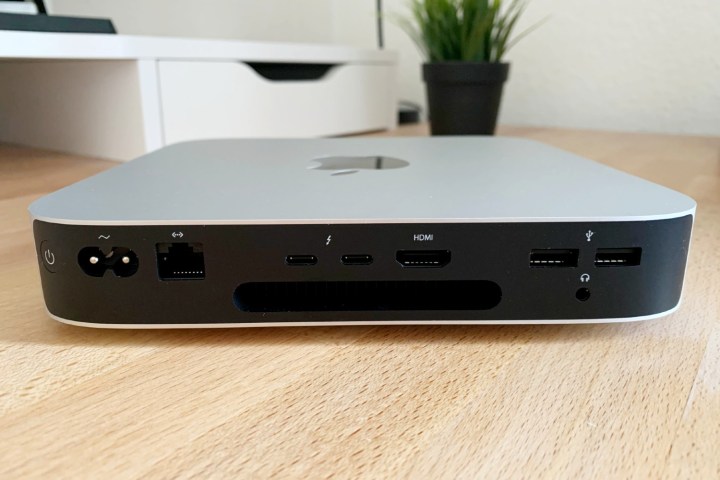
In the era of smartphone computers in everyone’s pocket, portability isn’t as important as it once was. While the Mac Mini is not a laptop and is not a portable computer, it does offer some advantages over the similarly priced MacBook Air.
The Mac Mini offers more options for connectivity. You are less likely to run out of room if you run multiple peripherals. You can stay connected without using hubs that tend to slow device performance down. Given its range of ports in a small footprint, you can plug almost anything in with ease. On the off chance that you are missing a compatible connector on this device, it is likely you can find an adapter. The M1 Mac Mini has less ports than prior models, but it is still probably enough for most people.
If you are running the MacBook Air, you are limited to just two ports. While you can still use hubs and adapters to get the setup you want, you will have to choose between portability and usability. You may find yourself continually swapping them in and out if you use numerous external devices throughout the day.
Factoring in the devices you need to connect may help sway you in one direction or the other. If you favor working from home rather than being mobile, the convenience of a more permanent desktop setup may be appealing.
The Mac Mini’s hardware has more capabilities than the MacBook Air and offers an extremely competitive entry-level price tag. You’ll get more value for your dollar if you already own a display, keyboard, and mouse.
To use the Mac Mini, you’ll have to buy peripherals if you don’t already own them, so be sure to include the price of additional hardware when considering your budget. You’ll also have to make sure that the cords are compatible; you might need to add in some connectors or adapters to make everything work properly.
The MacBook Air is a sturdy laptop compared to its equivalents, and the Mac Mini is a powerful desktop computer. If you want a laptop or a desktop, your choices are simple. However, when you compare these two Apple computers against each other, it’s a bit tougher to determine a winner. Nonetheless, the Mac Mini is more capable and powerful, helping it beat out the MacBook Air. If power is what’s most important to you, the Mac Mini hands down.
You can’t go wrong with either of these options. Which one is best for you depends on whether you need a machine to go with you wherever you go or a more dedicated home setup.
Editors' Recommendations
- The XPS 16 is fighting an uphill battle against the MacBook Pro
- The 5 best MacBooks for video editing in 2024
- MacBook Pro 16 vs. MacBook Pro 14: The important differences
- The best MacBook to buy in 2024
- Laptop buying guide: what to look for in 2024
